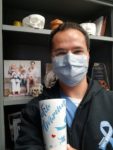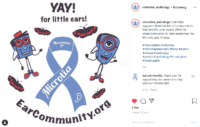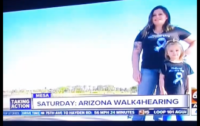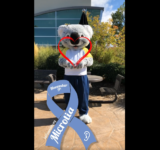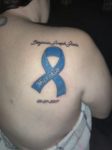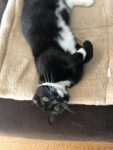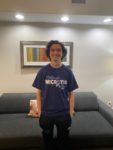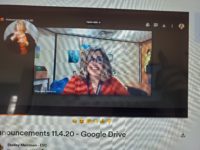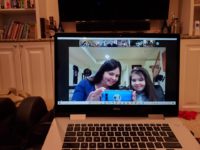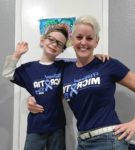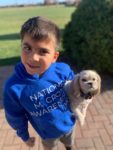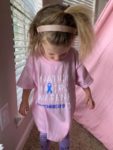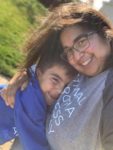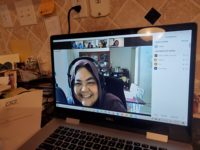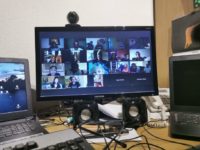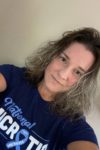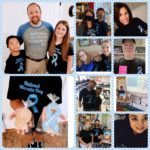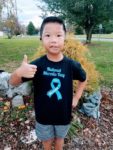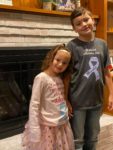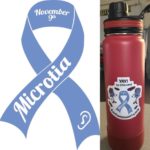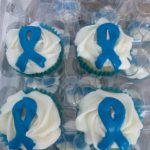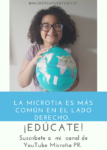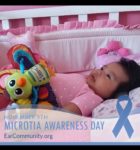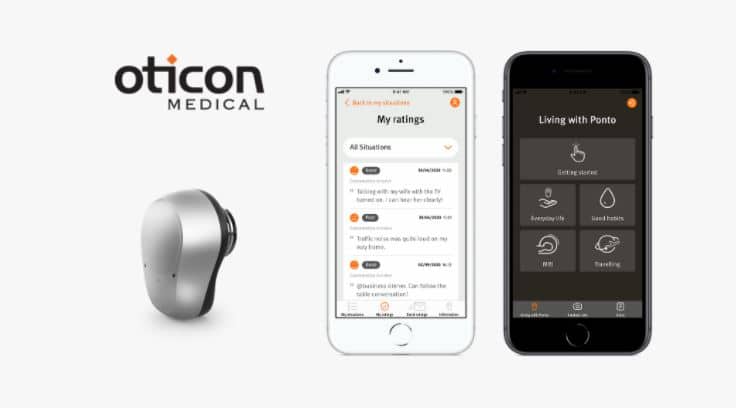Congressman Joe Neguse Reintroduces “Ally’s Act” His Bipartisan Bill Inspired By 11-Year-Old Broomfield Constituent, to Increase Access to Specialized Hearing

January 27, 2021 Washington, D.C.—Today, Congressman Joe Neguse, announced the reintroduction of “Ally’s Act,” his bicameral, bipartisan legislation to require private insurance companies to cover osseointegrated hearing devices (“OIDs”), including bone anchored hearing aids (“BAHA”) and cochlear implants. The bill was inspired by Ally, an 11-year-old from Broomfield, Colorado, who was born without a right ear or hearing canal and therefore requires the use of a BAHA. After Ally’s insurance company denied coverage of her hearing device, her mother Melissa formed the organization Ear Community to help advocate for insurance coverage of these devices to ensure no person is left unable to hear because of private insurance companies’ refusal to provide coverage.
When Ally wrote a letter to Congressman Joe Neguse explaining her situation, he got right to work introducing a bill to fix the issue, naming it “Ally’s Act” in her honor.
“For Ally and so many others, specialized hearing devices are critical for communicating. For insurance companies to deny coverage for these essential devices goes against common-sense. Cochlear implants and bone anchored hearing aids have helped countless individuals to communicate, and to thrive in their communities at school, work and in their social lives,” said Congressman Neguse. “I’m incredibly grateful for Ally’s initiative and courage to bring this issue to my office so we could get to work on a legislative fix to address it.”
“In my own experience with Ally, and through my work with Ear Community, I encounter the struggle to convince private insurance that these devices are necessary nearly every day,” said Melissa Tumblin, Executive Director and Founder of Ear Community. “Hearing device insurance coverage needs to be consistent across the U.S. and I look forward to continuing to work with Rep. Neguse to ensure that it becomes so.”
Ally’s Act is co-led by Congressmen David B. McKinley, P.E. (R-WV) and Congressman Mike Thompson (D-CA), the co-chairs of the Congressional Hearing Health Caucus, and holds bicameral support from Senator Elizabeth Warren and Senator Shelley Capito in the Senate.
“As the only Member of Congress with a cochlear implant, I know from firsthand experience the difference in the quality of life these devices can provide,” said Congressman David McKinley. “Ally’s Act will help thousands of Americans with severe hearing loss gain access to life-changing treatment.”
“Ensuring that everyone can access the health care technology they need to fully hear and communicate is critical to our work to expand access to health care, said Congressman Mike Thompson. “That’s why I am proud to be an original coauthor of this bill to require insurers to cover hearing devices for children and adults with congenital hearing defects. These devices are crucial to helping people be full participants in their daily lives and I’m glad we have a solution to help ensure folks can afford them.”
“Despite the critical and life-changing support these specialized hearing devices provide, many adults and children throughout the United States cannot obtain them because they are too expensive,” said Senator Elizabeth Warren. “This is why I’m glad to introduce this bipartisan legislation, which would increase device access and ensure that no individual with hearing loss is left behind.”
“For people who suffer from hearing loss, devices and implants like OIDs and BAHAs are life-changing. Our senses are something we so often take for granted, and ensuring that insurance companies cover these hearing aids provides major relief and comfort to those born with hearing loss and their families. I’m proud to team up with Senator Warren to re-introduce Ally’s Act, and I look forward to continuing to work to establish better access to these critical hearing devices,” said Senator Shelley Moore Capito.
Many throughout the United States are born with hearing loss due to congenital anomalies, including aural atresia (underdeveloped or absent ear canals) and/or microtia (physically missing outer ears). OIDs, including BAHA’s and Cochlear implants, help different forms of hearing loss than traditional hearing aids and are often the only hearing device that can restore hearing for these individuals.
“American Cochlear Implant Alliance enthusiastically supports Ally’s Act, legislation intended to ensure that Americans have access to hearing implants including cochlear and osseointegrated implants,” said Donna L. Sorkin, Executive Director, American Cochlear Implant Alliance. “Representative Neguse has demonstrated leadership and understanding of the extraordinary value of appropriate hearing healthcare for people of all ages, allowing those who need them to hear to pursue education, participate in the workplace, and enjoy a high quality of life.”
“The American Speech-Language-Hearing Association applauds Representative Neguse for reintroducing Ally’s Act, along with Representatives McKinley and Thompson, co-chairs of the Congressional Hearing Health Caucus,” said A. Lynn Williams, PhD, CCC-SLP, and ASHA 2021 President. “Being able to effectively communicate is a basic human right, and this proposal will help ensure that individuals born with congenital hearing loss—and those who require implantable hearing devices—have access to needed care and hearing technology by ensuring appropriate coverage by private insurers.”
This legislation is supported by the following organizations and individuals dedicated to ensuring private insurance coverage of these specialized hearing devices: This bill is endorsed by Ear Community; the American Cochlear Implant Alliance; the American Academy of Audiology; the American Speech-Language-Hearing Association; Waiting to Hear; HearStrong; Lemon Aids 4 Hearing; Songs for Sound, Inc; American Tinnitus Association; the Alexander Graham Bell Association for the Deaf and Hard of Hearing; City and County of Broomfield, Colorado; Hands & Voices; Harvard Medical School – Massachusetts Eye and Ear/Otolaryngology; Let Them Hear Foundation; Morgan’s Magical Ears; Educational Audiology Association; Dallas Ear Institute; the Acoustic Neuroma Association; Hearing Health Foundation; Colorado Academy of Audiology; the California Ear Institute; Aid the Silent; HearAid Foundation; New York Eye and Ear Infirmary of Mount Sinai; Microtia and Atresia at Stanford Hospital and Clinics/Otolaryngology; the American Pediatric Surgical Association; American Society of Pediatric Otolaryngology; Michigan Medicine – Department of Otolaryngology; University of Pittsburgh Medical Center/Otolaryngology; the Otolaryngology Department at Columbia University Irving Medical Center; Chad Ruffin, MD; Proliance Surgeons; Prader-Willi Syndrome Association/USA Advocacy Committee; Weill Cornell Medical College – Departments of Otolaryngology and Audiology; Hearing Industries Association; Hearing Loss Association of America; Plastic Surgery Department at Johns Hopkins; Association of Medical Professionals with Hearing Losses; the University of Southern California Caruso Department of Otolaryngology – Head & Neck Surgery; University of California San Francisco Medical School/Department of Otolaryngology and Cochlear Implant Center; and Johns Hopkins Biomedical Engineering and Auditory Research Department.
Click here for link to press release.
###
MED-EL USA Launches SAMBA 2 Audio Processor for the BONEBRIDGE Bone Conduction System
Intelligent Sound Adapter 2.0 automatically detects, optimizes settings to match environment
January 6, 2021 – (DURHAM, NC) – MED-EL USA, a leader in implantable hearing solutions, today announced the launch of the SAMBA 2, a next-generation audio processor for the BONEBRIDGE Bone Conduction System, which includes the recently launched BCI 602. BCI 602 is an active transcutaneous bone conduction implant that leaves skin intact. The BONEBRIDGE System is indicated for individuals age 12 years and older with conductive hearing loss, mixed hearing loss, or single-sided deafness.
The U.S. Food and Drug Administration (FDA)-cleared SAMBA 2 Audio Processor features enhancements for ease of listening and handling. Intelligent Sound Adapter 2.0 automatically adjusts settings to match different environments that are particularly challenging to people with hearing loss. This includes an automatic setting for listening in cars which uses Speech Tracking to identify the optimal microphone mode for the user to understand conversation coming from the side or behind.
SAMBA 2 is also designed for easier listening in complex environments such as restaurants, effectively reducing the impact of noise, for example interfering background conversations and the clattering of plates and silverware, while adaptive directional microphones and directional speech enhancement allow the user to focus on their conversation.
“SAMBA 2 is a great example of the ongoing collaboration that MED-EL has with our recipients, even after they receive a hearing implant,” said Raymond Gamble, President & CEO, MED-EL North America. “We listened closely to feedback and worked diligently with our engineers to make the listening experience even more effortless for our BONEBRIDGE recipients.”
SAMBA 2 provides the longest lasting battery life of any active transcutaneous audio processor on the market, with approximately 8 to 10 days from one standard 675 hearing aid battery. When the time comes, battery changes are fast and easy thanks to SAMBA 2’s intuitive design.
SAMBA 2 GO connects wirelessly to Bluetooth devices and via a cable to non-Bluetooth devices to allow streaming from mobile phones, televisions and electronic devices. It can also be used with FM systems and remote microphones for better hearing in noisy environments. And, while the Intelligent Sound Adapter 2.0 adjusts settings automatically, recipients still have control over their settings with the SAMBA 2 Remote, an app available for iPhone and Android that enables users to switch between settings without a separate remote control. The Intelligent Sound Adapter 2.0 then “learns” which settings the user most often changes manually and adapts.
Thin and lightweight, SAMBA 2 offers recipients a wide array of easily interchangeable covers so the audio processor may be worn discreetly under the hair, or worn to stand out with colorful designs. The audio processor is dust, sweat and splashproof, and can be completely submersed in water with the optional WaterWear waterproof cover.
Consistent with MED-EL’s industry-leading legacy support, SAMBA 2 is compatible with both versions of the BONEBRIDGE Bone Conduction Implant, the BCI 601 and BCI 602. BONEBRIDGE bone conduction implants are also engineered to be compatible with future generations of audio processors, allowing recipients to access the latest hearing technology, no matter when they received their implant.
For more information about SAMBA 2, BONEBRIDGE candidates and recipients can visit: https://www.medel.com/en-us/hearing-solutions/samba2.
About the BONEBRIDGE Bone Conduction System
In 2018, after successful use internationally, MED-EL USA launched the country’s first active transcutaneous bone conduction system, BONEBRIDGE, marking the beginning of a new era in bone conduction stimulation. The groundbreaking BONEBRIDGE Bone Conduction System was comprised of an internal implant, BCI 601, and the externally worn SAMBA Audio Processor. Just a year later, MED-EL announced the FDA clearance of the BCI 602, featuring design optimizations to support a streamlined surgery. The second-generation implant for the BONEBRIDGE System was developed through a long and valued partnership with ENT surgeons, hearing health professionals and the hearing loss community. Through these relationships, MED-EL has a proven history of continuous advancement in active transcutaneous bone conduction implant technology.
About MED-EL
MED-EL Medical Electronics, a leader in implantable hearing solutions, is driven by a mission to overcome hearing loss as a barrier to communication. The Austrian-based, privately owned business was co-founded by industry pioneers Ingeborg and Erwin Hochmair, whose ground-breaking research led to the development of the world’s first micro-electronic multi-channel cochlear implant (CI), which was successfully implanted in 1977 and was the basis for what is known as the modern CI today. This laid the foundation for the successful growth of the company in 1990, when they hired their first employees. To date, MED-EL has grown to more than 2,200 employees from around 75 nations and has 30 locations worldwide.
The company offers the widest range of implantable and non-implantable solutions to treat all types of hearing loss, enabling people in 124 countries to enjoy the gift of hearing with the help of a MED-EL device. MED-EL’s global portfolio of hearing solutions includes cochlear implant systems, a combined Electric Acoustic Stimulation hearing implant system, and bone conduction devices. www.medel.co
# # #
MEDIA CONTACT:
Rebecca Novak Tibbitt
T: 704-341-1544
E: media.us@medel.com
A Christmas gift of hearing for one little boy thanks to Cochlear Americas and Ear Community

Katie and JJ Shear at his Baha 5 fitting on 12/22/2020, Charleston, West Virginia.
Christmas miracles do happen, even during a pandemic in 2020! Here is a heartwarming story about the love and advocacy of one West Virginia family for their son. Meet the Shear family! Katie and Andrew Shear’s son, JJ, was born this summer – a shining moment during this extraordinarily challenging year. Prior to JJ being born, Andrew and Katie had never heard of Microtia or Atresia and knew little about the world of hearing loss. When JJ was born, Katie was shocked when she heard someone in the operating room utter, “he’s missing an ear.” The Shear Family learned that JJ was born with Microtia and Aural Atresia of his left ear.
Katie and Andrew wasted no time when researching all the options that would help JJ. Once learning more about his hearing loss from his ENT and audiologist, they quickly understood how important it was for JJ to hear better. Especially, during the critical years of development (birth to age 3) when speech and language skills are developing.
After learning about a hearing device that would help their son hear better, they quickly applied for a bone conduction hearing aid (BAHA) through their insurance provider. Katie believed that “by paying into a health insurance provider, assuming that by paying health insurance premiums on a monthly basis would ensure that medical tests, medical devices, and routine care around his ear would be covered. After all, isn’t this why you pay the health insurance premiums, for situations like this?” To the Shear Family’s surprise, they quickly learned that this was not the case. JJ’s family was denied their claim for a bone anchored hearing device for their son by United Health Care. The response from their insurance provider was that a hearing device was “not medically necessary” and “to seek alternative options” even though JJ’s ENT and audiologist both recommended the use of a bone conduction hearing device to help JJ hear. While the family had already researched all options for JJ’s hearing, they already knew that there was no alternative option to help him hear better at this time other than with a hearing device. The family then filed an appeal with their insurance provider, but sadly their appeal was also denied.
The Shear Family was still hopeful to get JJ a hearing device though. A couple of months later, Andrew decided it was time to make a job transition. Under his family’s new insurance plan and provider, they applied for a BAHA for JJ. Again, to the family’s surprise, the new insurance provider (Meritain Health) also denied their claim for a hearing device for JJ. This time the insurance provider stated that “A BAHA is classified as a hearing aid and we don’t cover hearing aids.” This is when the Shear Family knew they had to look at other options to help JJ hear.

Parents will do anything to give their children a healthy and normal life, but for one Charleston family it has been an uphill battle. (Courtesy of Kara Blakeman Photography via the Shear Family)
Luckily, Katie and Andrew discovered the Ear Community Organization early on when researching Microtia and Atresia. While researching information for JJ, the family also noticed that Ear Community was championing a piece of legislation called Ally’s Act (H.R. 5485 and S. 4532), a bill that would help ensure that private insurers cover the very hearing device that JJ had been denied twice by two different insurance providers the family had coverage with. Katie reached out to Melissa Tumblin, Founder of Ear Community, and immediately found a friend and advocate. The Shear family’s situation is exactly why Ear Community is championing Ally’s Act. Katie and Andrew then applied for a BAHA through Ear Community for JJ. As a way of helping give back, Katie and Andrew have begun advocating for Ally’s Act and are hopeful that this bill will become the law someday. The Shear Family does not want another child to be denied the opportunity to hear like their son JJ was. Katie and Andrew shear’s story was also featured on their local news in a news clip that can be found here.
Ear Community’s board of directors were touched by JJ’s story and yet so disappointed to see the uphill battle the Shear family had faced with their insurers in trying to provide full access to sound for their son with a hearing device. Melissa Tumblin stated that “Families shouldn’t have to fight to get hearing devices that would help their children thrive in life. Also, when medical professionals state that something is medically necessary, insurance companies shouldn’t have the authority to override and go against the opinion of a medical professional knowing that these children would benefit from this type of hearing device technology.” JJ Shear was fitted with his NEW Baha 5 on Tuesday, December 22nd, 2020 by Dr. Janet Lauerman in Charleston, West Virginia at the Charleston Hearing Care. Katie Shear had

JJ Shear practicing wearing a soft band head band
been preparing for this day for JJ as soon as they found out a bone conduction hearing device would be donated to him. In fact, she had purchased a soft band head band for JJ to wear for the past couple of weeks so he would be used to wearing a band on his head for when they received his Baha. Katie Shear shared with Ear Community that ever since JJ’s Baha was turned on, “he is more alert and responsive. In fact, JJ has become quite the little wild man since getting home following his appointment. Katie and Andrew Shear are grateful for JJ’s new Baha 5 and said “finding this community has been such a blessing…Ear Community is an amazing resource for new parents and families. Thank you to Ear Community and Cochlear Americas for donating a Baha to JJ! Words do not even begin to describe our appreciation to the people who have made this possible. We can’t wait to see how JJ continues to thrive every day with is Baha!”
Thank you to JJ’s audiologist, Dr. Janet Lauerman, for all the help and education she provided to the Shear Family while trying to do what was best for JJ and for helping JJ’s family appeal with their insurance providers. A special thank you to Cochlear Americas, a proud sponsor to the Ear Community Organization since 2011, for collaborating with Ear Community so both organizations, together, could help provide JJ a Baha 5 and the gift of sound! As they say, – it takes a village! Many people were involved while trying to help JJ hear. A very special thank you to Keesha Pfeiffer (Director of Volunteer Strategy & Engagement, Cochlear North Americas), Patti Trautwein (Vice President of Marketing, Cochlear North Americas) and Tony Manna (President of Cochlear North Americas) for making sure that JJ received his device in time for Christmas! “Cochlear is the global leader in implantable hearing solutions. It has a dedicated global team of more than 2,500 people who deliver the gift of sound to those with hearing loss in over 100 countries. Its vision is to connect people, young and old, to a world of sound by offering life enhancing hearing solutions. In 2013, Cochlear celebrated 100,000 Baha System users – all with unique stories of how being able to hear again has impacted their lives. The Cochlear promise of “Hear Now. And Always” embodies the company’s commitment to providing its recipients with the best possible hearing performance today and for the rest of their lives.”
Ear Community would also like to extend a warm thank you to our individual donors and members of the community who want to help us continue our work – none of this would be possible without your support! We are so happy to have been a part of helping JJ hear better! Thank you again to everyone involved who helped make JJ’s Christmas extra special by providing him with the gift of hearing!
Ear Community
www.EarCommunity.org
Introducing the ADHEAR COVID-19 Program by MED-EL

Experiencing a global public health emergency has prompted us all to do the very best we can to continue to support the communities we serve. During COVID-19, MED-EL has introduced a special program to provide prompt access to sound for candidates for a bone conduction system.
We have found that training the recipient and family on the use and care of ADHEAR is the most important part of the process. So for ADHEAR candidates who would prefer to proceed quickly to better hearing, there is no need to delay. We partner with audiologists to provide support for successful remote trainings and resources like videos, checklists and questionnaires.
The ADHEAR COVID-19 Program includes:
1. Flexible shipping options
MED-EL can offer the audiologist flexible shipping choices – direct to the recipient’s doorstep or direct to the audiologist’s clinic. This means the audiologist can handle scheduling limitations due to COVID-19 and more importantly, candidates who are not comfortable with face-to-face appointments at this time.
2. Remote orientation for the recipient
ADHEAR comes out of the box with 4 pre-defined settings, a push button for program changes and an active volume control wheel.* In fact, the software is described as an optional configuration software because these pre-defined settings are proven to be a good starting point for recipients, with equivalent outcomes to other bone conduction devices on the market. In the two years since its launch, ADHEAR has moved from innovative solution to proven concept. Click here for a review and analysis of ADHEAR results.
Once clinics return to normal operations, we recommend an in-person follow-up for any programming adjustments.
For more information, please visit: www.MED-EL.com
Charleston family fighting to get hearing device for infant son
Microtia and Atresia Awareness Day – November 9th, 2020

November 9, 2020 – Congressman Joe Neguse honoring National Microtia Awareness Day! Congressman Neguse helped Ear Community introduce hearing device insurance legislation on December 18, 2019, H.R. 5485 (and S. 4532), also known as Ally’s Act – named after Ear Community founder, Ally Tumblin.
November 9th is National Microtia Awareness Day!
Microtia is a congenital birth anomaly that occurs when one or both ears do not fully develop or are physically missing. Microtia is often accompanied by Aural Atresia – when the ear canals are underdeveloped or absent, resulting in hearing loss. Many children have associated craniofacial challenges, known as craniofacial microsomia, which affect the symmetry of the jawline causing oral challenges and a slight crooked smile. In the United States, Microtia and Aural Atresia affect 1 in every 6,000 births which is approximately 663 babies born each year. There are an estimated 54,000 individuals currently living in the United States with Microtia and Atresia. The numbers of individuals affected by Microtia and Atresia vary regionally from country to country. While African Americans seem to be the least affected, Native American, Asian, Ecuadorian, Colombian, and Latino-Hispanic ethnicities are often affected more so. While it is not yet understood what causes Microtia and Atresia, it is possible that it is genetic. Microtia and Aural Atresia occurs during the 1st trimester of pregnancy when the ears develop. Ear Community is the first parent driven nonprofit and the first comprehensive source to help the Microtia and Atresia community globally. Our organization has educated and brought together tens of thousands of people across the world & has shined a light on our rare cause/congenital anomaly.
It is Ear Community’s hope that families who have new babies born with Microtia and Atresia will leave the hospital armed with more answers than questions & their dreams for their children intact. If more people learn about Microtia & Atresia, they will be kinder & more accepting. It is also our goal for children & adults with Microtia and Atresia to realize that they are not alone. Facial challenges, hearing loss and the longing for social acceptance are some of the daily concerns for those who are born with Microtia. Children are born into this world not knowing they are any different from anyone else. Many with Microtia share similar stories of curious stares, bullying, or awkwardness. Individual personalities, social conditioning, available treatments and bullying all impact how every child develops and copes as an adult. By removing unnecessary boundaries and replacing them with resources, tools, and support, we can eliminate bullying and clear the way for an even more successful future.
The Tumblin family founded the Ear Community Organization after their youngest daughter was born with Microtia and Atresia of her right ear in 2009. The Tumblin family also established National Microtia Awareness Day to embrace Microtia and Atresia families, everywhere. This May, Ear Community turned 10 years old! For the past decade, the Ear Community Organization has brought over 15,000 people together from around the world at the organization’s FREE events making it possible to share experiences and resources, donated over 130 hearing devices and has awarded 15 college scholarships. The community is made up of not only children and adults with Microtia and their families, but teachers, advocates and medical professionals from all over who foster awareness and assistance for this amazing group of people. Board members for Ear Community either have the condition themselves or a family member who does, so they have close personal experience with the obstacles from a myriad of perspectives and can offer guidance and mentoring. The organization also has an advisory board made up of medical professionals who have chosen to focus their skills on helping improve the quality of life for individuals who have Microtia and Atresia.
Each year, National Microtia Awareness Day is recognized worldwide and continues to grow! This year, despite the COVID-19 pandemic, our awareness day was embraced and celebrated by families and medical professionals from all over the world from all continents! In fact, our awareness day is being embraced throughout the world and many families call our day “international Microtia Day” or “little ear day!” Many medical facilities hosted virtual educational seminars for Microtia and Atresia families at audiology clinics, ENT and plastic surgery facilities, even some in person clinics (safely) took place, some hosted grand rounds sessions on rib cartilage carving classes and many doctors and families blogged and posted about educational information about Microtia and Atresia on all social media platforms! At Ally Tumblin’s school, her school principals promoted awareness and education about Microtia and Atresia during morning announcements each day for the week leading up to National Microtia Awareness Day and wore their shirts even during remote online schooling! A teacher of the Deaf and Hard of Hearing in California, Elizabeth Desloge, who always hosts a Microtia Awareness Day event each year, even managed to host a drive thru socially distanced event for families this year which was a huge success! Children made videos, many presented (virtually) to their classrooms and so many families supported our organization by wearing  our Ear Community Microtia Awareness Day t-shirts. Microtia Awaerness Day even made it on the local news in some states and in Brazil! This year, we expanded our awareness day accessories to mugs, backpacks, socks, stickers, pillows and more which many enjoyed! Every year on November 9th, NMAD offers a special way to spread some positivity and help promote awareness, education and kindness! Our day is an amazing day and special to so many around the world! This year, Ear Community also hosted our first virtual WORLD Microtia and Atresia event that included music and stories from many within the Microtia and Atresia community. We had families join us from many states across the US in addition to Canada, Australia, South Africa and Ethiopia. The Tumblin Family enjoyed being included with some of the virtual events hosted by other countries on Microtia Awareness Day including South Africa and Malaysia. Many of these families have become friends from over the years of being a part of Ear Community’s community.
our Ear Community Microtia Awareness Day t-shirts. Microtia Awaerness Day even made it on the local news in some states and in Brazil! This year, we expanded our awareness day accessories to mugs, backpacks, socks, stickers, pillows and more which many enjoyed! Every year on November 9th, NMAD offers a special way to spread some positivity and help promote awareness, education and kindness! Our day is an amazing day and special to so many around the world! This year, Ear Community also hosted our first virtual WORLD Microtia and Atresia event that included music and stories from many within the Microtia and Atresia community. We had families join us from many states across the US in addition to Canada, Australia, South Africa and Ethiopia. The Tumblin Family enjoyed being included with some of the virtual events hosted by other countries on Microtia Awareness Day including South Africa and Malaysia. Many of these families have become friends from over the years of being a part of Ear Community’s community.

Harvard researchers, Dr. Angela Tai and Barbara McDonough, RN working on genetic research for Microtia and Atresia while embracing Microtia Awareness Day!
Some of the advocacy and awareness the Ear Community Organization has set out to promote and champion in addition to helping families and their children find acceptance is working toward finding answers as to why Microtia and Atresia happen. Ear Community has directly championed genetic research in collaboration with Harvard’s Seidman Labs, Vanderbilt, the MIT Broad Institute along with the Gabriella Miller Kids First Foundation. This September, we received the results back from our 2 year genetic study and are very excited to share about these results just as soon as the data found has been analyzed and is published. We look forward to sharing this new information with Microtia and Atresia families all over the world and also as an update to help medical professionals continue promoting the latest education and information about Microtia and Aural Atresia.
A very special thank you to all of Ear Community’s amazing sponsors who helped make our awareness day extra special for everyone through special posts and videos! Thank you also for supporting Ear Community’s efforts so that we can continue to bring our community members together each year at our events! This year was a little different for us due to COVID-19 and not being able to host our events in person as we have for the past 9 years, but we still managed to bring our community together, virtually. In fact, no matter how much this pandemic has affected us – this year was a blessing as our virtual events were able to bring together more families and medical professionals from all over the world!
Thank you to our Platinum Sponsors!
Cochlear Americas (Baha 5 and Osia)
Oticon Medical (Ponto 3 Superpower and Ponto 4)
Thank you to our Silver Sponsors!
MED-EL (ADHEAR and BONEBRIDGE)
Our hearts are full once again this year and remember kindness goes a long way!
Everyone at the Ear Community Organization
www.EarCommunity.org
Here are some amazing memories from all over the world for this year’s Microtia Awareness Day!
November 9th is National Microtia Awareness Day!
 National Microtia Awareness Day is November 9th! Think of the number 9 as the shape of an ear.
National Microtia Awareness Day is November 9th! Think of the number 9 as the shape of an ear.
NMAD was established by the Ear Community Organization five years ago to help promote education and awareness about Microtia (missing and underdeveloped ears) & Aural Atresia (missing ear canals, resulting in hearing loss). Some of our children also have craniofacial microsomia (asymmetry of the jaw on one side causing a crooked smile). Our day is dedicated to educating the public about Microtia & Atresia in hopes that the next time someone sees a child or adult with missing ears that they just say “hi” instead of staring or asking questions.
Every November 9th honors children and adults who were born with Microtia & Atresia. After all, our children are perfect and beautiful in every way. Thank you for being kind!
To learn more about Microtia & Aural Atresia, please visit the Ear Community Organization at: www.EarCommunity.org
To learn more about National Microtia Awareness Day, please click here.
#microtia #hearingloss #advocacy #nationalmicrotiaday #nationalmicrotiaawarenessday #auralatresia #microtiakidsrock #congress #nmad #allysact
Oticon Medical Launches New Blog for Hearing Healthcare and Medical Professional
Oticon Medical is pleased to announce the launch of its new blog, Hearing Implant Updates for Professionals, which will provide topics of interest to hearing healthcare and other medical professionals.
Oticon Medical has launched a new blog, Hearing Implant Updates for Professionals. The blog has been designed as an added way to engage Oticon Medical’s current and potential professional customers, and will provide topics of interest for hearing healthcare professionals and other medical professionals who wish to learn more about hearing implant solutions, clinical evidence related to bone anchored hearing treatments, and the latest product updates from Oticon Medical.
Hearing health topics scheduled for coverage
The initial blog posts will focus on the ten-year anniversary of Oticon Medical’s Ponto bone anchored hearing system. A new post will be scheduled for release monthly, with Clinical Training Manager Carissa Moeggenberg, MA, CC-A serving as the primary author. Additionally, Oticon Medical plans to engage customers as well as clinical team members to serve as contributing blog post authors.
“We welcome feedback and topic suggestions from our professional customers and the audiology community,” Carissa said. “We want these articles to be informative, impactful and bring value to clinicians and other medical professionals who wish to learn more about the benefits of bone anchored hearing treatments and impart that knowledge to their patients.”
The inaugural two-part blog post on Hearing Implant Updates for Professionals focuses on ten years of delivering sound that matters. Part 1 highlights clinical evidence supporting the minimally invasive Ponto surgery (MIPS), a surgical procedure that offers an exclusive minimally invasive approach. The second part will focus on proven hearing excellence with the advanced technology incorporated into Ponto sound processors and ten years of excellent hearing results, summarized concisely.
The blog can be found here: www.hearingimplantupdatesforprofessionals.com.
For more information about Oticon Medical visit www.oticonmedical.com/us
About Oticon Medical
Oticon Medical is a global company in implantable hearing solutions, dedicated to bringing the magical world of sound to people at every stage of life. As a member of one of the world’s largest groups of hearing care companies, we share a close link with Oticon and direct access to the latest advancements in hearing research and technologies. Our competencies span more than a century of innovations in sound processing and decades of pioneering experience in hearing implant technology.
By working collaboratively with patients, physicians and hearing care professionals, we ensure that every solution we create is designed with user needs in mind. We share an unwavering commitment to provide innovative solutions and support that enhance quality of life for people wherever life may take them. Because we know how much sound matters.
For more information, please contact:
Hildy Silverman
Digital Marketing Manager
Oticon Medical, Inc.
580 Howard Avenue
Somerset, NJ 08873
hisi@oticonmedical.com
P: 1-(888) 277-8014
Normal hearing is 20/20: Get to know your hearing number during Audiology Awareness Mon
New public health campaign seeks to establish a simple health metric to define normal hearing to better monitor hearing loss, refer for treatment

Oct 07, 2020, 09:12 ET
LONE TREE, Colo., Oct. 7, 2020 /PRNewswire/ — Cochlear Limited (ASX: COH), the global leader in implantable hearing solutions, launches the Hearing 20/20 campaign, a new public health initiative to adopt 20/20 as a common metric for normal hearing, during October’s Audiology Awareness Month. Supported by 10 hearing health nonprofit and industry partners, establishing a simple, common metric, defined as 20 decibels in each ear, can help simplify the ongoing conversation and actions related to monitoring hearing health and treating hearing loss, especially among adults 55 years of age and older.

According to the Centers for Disease Control and Prevention (CDC), hearing loss is the third most common chronic physical condition impacting adults in the United States, and hearing loss is more prevalent than diabetes or cancer.1 However, hearing is not a mandatory part of an individual’s annual physical screening and generally is deprioritized amongst consumers and primary care providers2, even though studies continue to prove untreated hearing loss has a sizable negative impact on an individual’s overall health3.
Research conducted by Cochlear found 93 percent of consumers know what normal vision is, but only 9 percent can define normal hearing.2 Seventy-seven percent of consumers turn to their primary care providers for hearing loss information, but 75 percent of consumers do not complete annual hearing exams.2 Additionally, 47 percent of consumers prioritize their pet’s annual exam over getting their hearing checked annually.2
“Hearing health should be prioritized as a significant part of a person’s overall health, especially as we age,” said Joanna T. Smith, MS CCC-SLP, LSLS Cert., AVT, Founder, CEO and Executive Director, Hearts for Hearing. “Like vision, normal hearing is 20/20. Everyone should get to know their hearing number by requesting a hearing test at their next doctor’s visit and should continue checking their hearing health annually thereafter. We all know hearing loss can negatively impact a person’s quality of life; however, hearing loss is treatable and not something we just have to live with.”
For healthcare providers treating patients during an annual physical, a simple way to screen for hearing loss is wash your hands during the appointment. With the water running and back to the patient, ask a few questions. If they do not respond or the answers do not match what was asked, it is appropriate to start a conversation about hearing loss and discuss referring for a hearing test.4 For consumers and their loved ones, they should request a hearing test at their next annual physical so they can learn their hearing number.
Proper audiometric testing is needed to determine a person’s hearing number. The testing, typically done by an audiologist, can provide a summary of a person’s hearing status via an audiogram. During the testing, hearing thresholds are measured in decibels (dB) for each ear using pure tones across a range of frequencies (Hz). Pure-tone average (PTA) refers to the average of hearing thresholds at a set of specified frequencies and can indicate a hearing level for each ear. As such, a hearing level from 0 to 20 dB PTA in each ear is considered normal. Numbers exceeding 20 dB could benefit from amplification, such as hearing aids, while levels above 60 dB suggest a referral for a cochlear implant evaluation.5 Cochlear is proposing hearing health professionals use the PTA as a simple, easy to remember metric for consumers to track their hearing levels.
“We understand a PTA measurement is a very simplified metric amongst a complex battery of testing that hearing health professionals perform. However, if we want to help more people hear, we need to communicate simple metrics and help consumers and referring professionals adopt them much like other health metrics. Then we can help those who need treatment, like hearing aids or cochlear implants that are widely underutilized, hear better sooner and help increase quality of life earlier as well,” said Patricia Trautwein, AuD, Vice President, Product Management & Marketing, Cochlear Americas.
According to the National Institutes of Health (NIH), one in every three people 65 years of age and one in every two 75 years of age and over has hearing loss.6 The World Health Organization (WHO) estimates there are 72 million people who could potentially benefit from the use of a hearing device, such as a hearing aid or cochlear implant.7 However, on average, people with hearing loss wait six years to get their hearing loss treated.8 By 2030, all Baby Boomers will be 65 years and older and this generation will live longer than any generation in history.9 Prioritizing hearing health is necessary now to help aging adults live active, healthy and independent lives as long as possible.
This is the first phase of a multi-year initiative to educate the public about the importance of hearing health. To learn your hearing number, find a local audiologist near you from the directories linked on the Hearing2020.com website. Industry and nonprofit partners supporting the campaign include American Academy of Audiology, Academy of Doctors of Audiology, Hearing Loss Association of America, A.G. Bell, Hearing Health Foundation, Hearing First, Hearing Industries Association, American Cochlear Implant Alliance, Songs for Sound and Ear Community.
About Cochlear Limited (ASX: COH)
Cochlear is the global leader in implantable hearing solutions. The company has a global workforce of more than 4,000 people and invests more than AUD$180 million each year in research and development. Products include cochlear implants, bone conduction implants and acoustic implants, which healthcare professionals use to treat a range of moderate to profound types of hearing loss.
Since 1981, Cochlear has provided more than 600,000 implantable devices, helping people of all ages, in more than 180 countries, to hear. www.cochlear.com/us
References
- Blackwell DL, Lucas JW, Clarke TC. Summary health statistics for US adults: National Health Interview Survey, 2012. Vital health statistics, series 10, no. 260. Atlanta, GA: National Center for Health Statistics, CDC; 2014. http://www.cdc.gov/nchs/data/series/sr_10/sr10_260.pdf
- May 29, 2019 Cochlear 20/20 hearing study. Survey of 1,250 conducted by Penn, Schoen, Berland, March 13, 2019. Data on file.
- Brody, J. E. (2018, December 31). Hearing Loss Threatens Mind, Life and Limb. Available from: https://www.nytimes.com/2018/12/31/well/live/hearing-loss-threatens-mind-life-and-limb.html.
- Strait, J.E. (2020, August 27). Cochlear implants should be recommended for adults more often. Available from: https://medicine.wustl.edu/news/cochlear-implants-should-be-recommended-much-more-often-for-adults-with-hearing-loss/#:~:text=An%20international%20group%20of%20hearing,than%20is%20the%20current%20practice.
- Zwolan TA, Schvartz-Leyzac KC, Pleasant T. Development of a 60/60 guideline for referring adults for a traditional Cochlear implant candidacy evaluation. Otol Neurotol 2020;41:895-900.
- Hearing Loss and Older Adults [Internet]. National Institute on Deafness and Other Communication Disorders; c2018 [cited 11 Sept 2020]. Available from: https://www.nidcd.nih.gov/health/hearing-loss-older-adults.
- Deafness and hearing loss fact sheet [Internet]. World Health Organization; c2020 [cited 11 Sept 2020]. Available from: http://www.who.int/mediacentre/factsheets/fs300/en/.
- Hearing Industries Association. MT10 MarkeTrak 10 Base Report. Washington, DC: Marketing Research, Inc; March 27, 2019.
- America Counts Staff (2019, December 10). 2020 Census Will Help Policymakers Prepare for the Incoming Wave of Aging Boomers. Available from: https://www.census.gov/library/stories/2019/12/by-2030-all-baby-boomers-will-be-age-65-or-older.html.
Please seek advice from your health professional about treatments for hearing loss. Outcomes may vary, and your health professional will advise you about the factors which could affect your outcome. Always read the instructions for use. Not all products are available in all countries. Please contact your local Cochlear representative for product information.
© Cochlear Limited 2020. All rights reserved.
SOURCE Cochlear Limited

Related Links
http://www.cochlear.com/us











